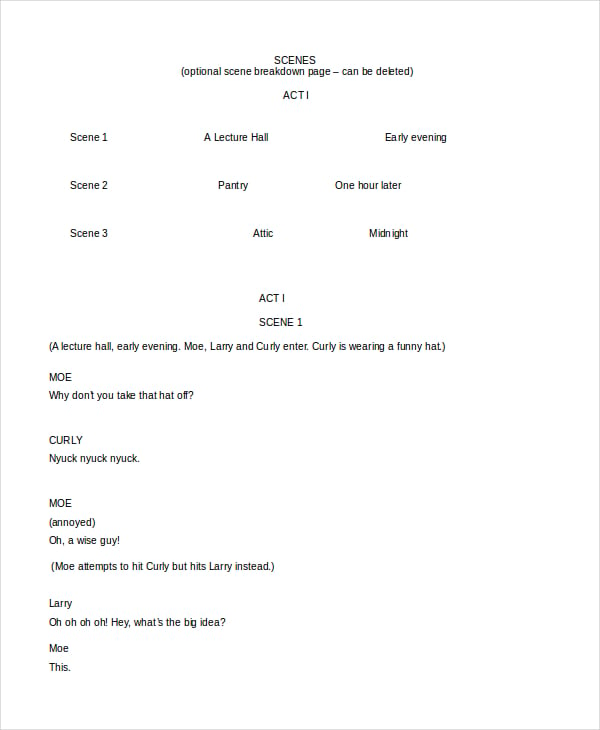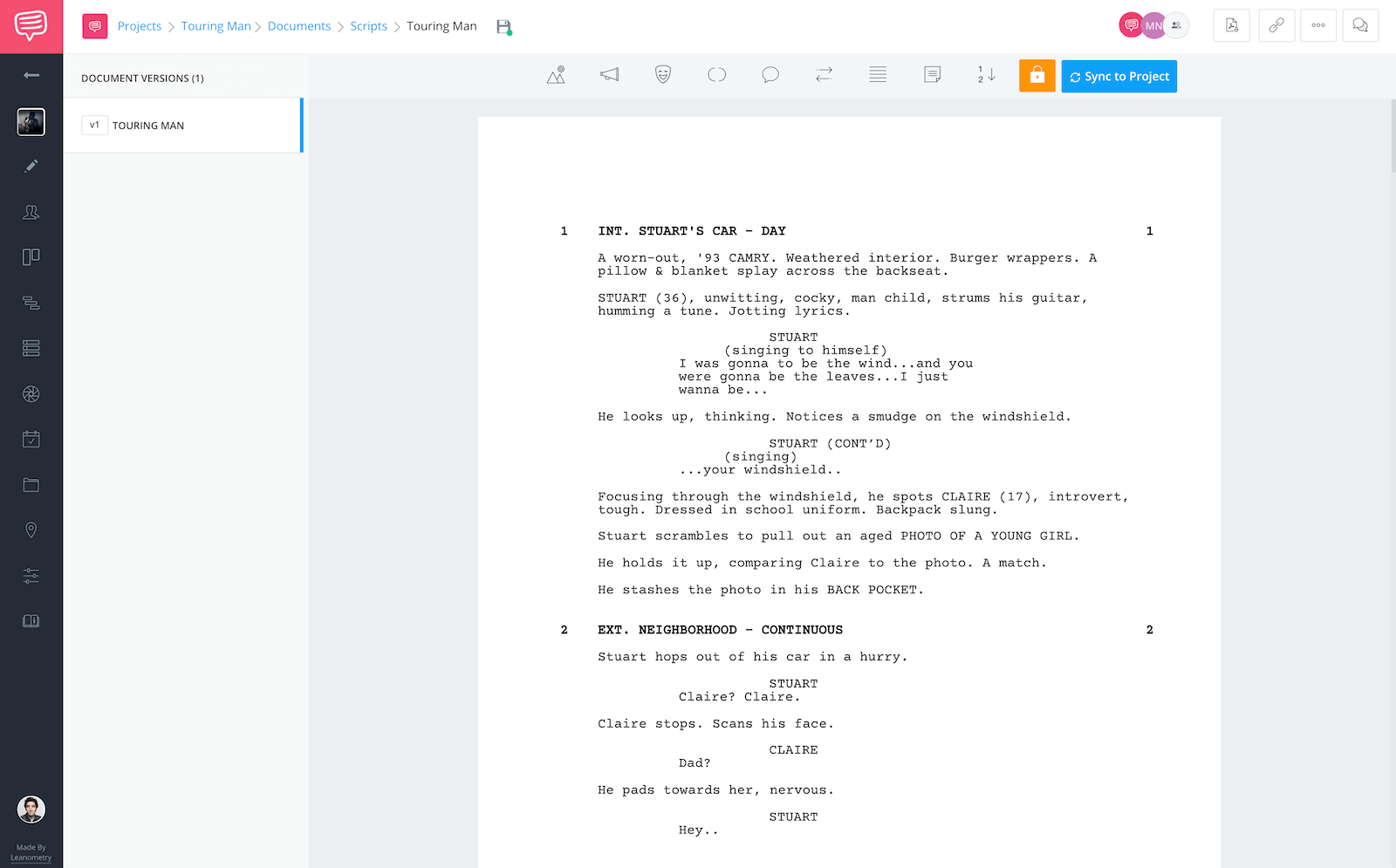UPDATED:
Standard Playwriting Format Please follow these standard formatting rules: Act and Scene headings are centered. Character’s names are centered and capitalized. Template If you are writing a novel, then you should use a template that is right for the job. There are a couple of manuscript templates on microsofts website, but basically you should be setting up to use Times New Roman, 12pt, double space, indent first line and all headings at the same size as the normal text - extremely boring and easy to. This means that it should play on a movie screen, a television screen or even a computer screen. But when you write a script, you can apply it to other mediums. These include stage plays, radio programs, video games, and more. So when you’re writing a.
Here’s the word file I use for writing comic scripts.
At face value this would be considered a “tight” or “full” comic book script template as it includes placement for camera direction. I personally don’t make a distinction between tight and loose scripts. I simply write the script. Tight when it needs to be tight. Loose, when loose is enough.
New Comic Writers:
Free Script Writing Template
Read this article on comictography before using the template:

Open a new blank document in Word. Save it as SCRIPT TEMPLATE. This is the document you will use when you want to write a new script. The formatting you create in this document will not appear in other Word documents.
Not required for using the template, but newer comic writers may also be interested in these articles;
does comic script format matter and why reading famous writer scripts won’t teach you anything.
Microsoft Screenwriting Template
How to Use:
* I typically start with a two page document then cut and paste to whatever page count I need.
* Normally in my document, I just use “xxxxx” as place holders to type over. So my template would actually look like this;
Panel 1
EXT. XXXX – XXX – XXXXX
xxxxxxx.
1 xxxxx xxxxxxx.
1 xxxxx xxxxxxx.
Free Microsoft Writing Programs
Seeing as a document filled with a bunch of x’s would be boring and possibly confusing, I’ve gone ahead and thrown some tips in the panel descriptions and left some character names in position for clarity.
* Note on the first page it states; if the word Camera is hanging alone, above a panel description, then the writer is not specifying any specific camera shot or angle.
If you prefer writing a loose script, simply reduce the first panel slugline to “Camera” and ignore the camera declarations all together… or even better, just delete all the slugline placement holders completely before you get going.

* All dialogue, captions and sound effects should be numbered as they appear on the page. I thought it clearer to use a bunch of ones instead of a bunch of number signs. Trying to label them consecutively as a default would just make things more confusing for you once you start writing and cutting and pasting.
UPDATE: The need for numbering dialogues/captions/sound effects seems to be depreciating over time. I tend to do it just out of habit, but unless an editor specifically requests it, you can get by without it.
If anyone has any questions, feel free to ask.
Someone requested a sample page of actual script.
There are a number of sample pages in the Working Writer’s Guide to Comics and Graphic Novels, but I’ll drop a page of a recent project below.
You’ll note the only camera declaration comes in the first panel. A perfect example of how you can use this template regardless if you’re writing tight or loose. ▪
About the Author —
Nick Macari is a full-time freelance story consultant, developmental editor and writer, working primarily in the independent gaming and comic markets. His first published comic appeared on shelves via Diamond in the late 90’s. Today you can find his comic work on comixology, amazon and in select stores around the U.S. Visit NickMacari.com for social media contacts and news on his latest releases.
For more tips, bookmark the writing craft page. For all the tips buy the book.
Show your support by sharing the writing craft page on your social media.
